Lavender is one of the world’s most beloved plants, prized for its delicate purple flowers, soothing fragrance, and versatile uses in aromatherapy, culinary creations, and natural skincare. While typically associated with sprawling gardens and sun-drenched fields, lavender can thrive indoors with the right care and attention. If you’ve ever wondered how to successfully grow and maintain a lavender plant inside your home, this complete guide is for you.

Why Grow Lavender Indoors?
Before diving into care instructions, it’s helpful to understand why so many plant lovers bring lavender indoors:
- Fragrance: Its sweet, calming scent naturally perfumes your living space.
- Aesthetic appeal: Lavender’s silvery-green foliage and soft purple blooms enhance your home décor.
- Air-purifying properties: Like many houseplants, lavender helps purify the air.
- Therapeutic benefits: Lavender’s aroma reduces stress, improves sleep, and elevates mood.
- Year-round enjoyment: Indoor lavender offers blooms and greenery regardless of outdoor seasons.
With the right conditions and maintenance, lavender can flourish indoors just as beautifully as it does outdoors.
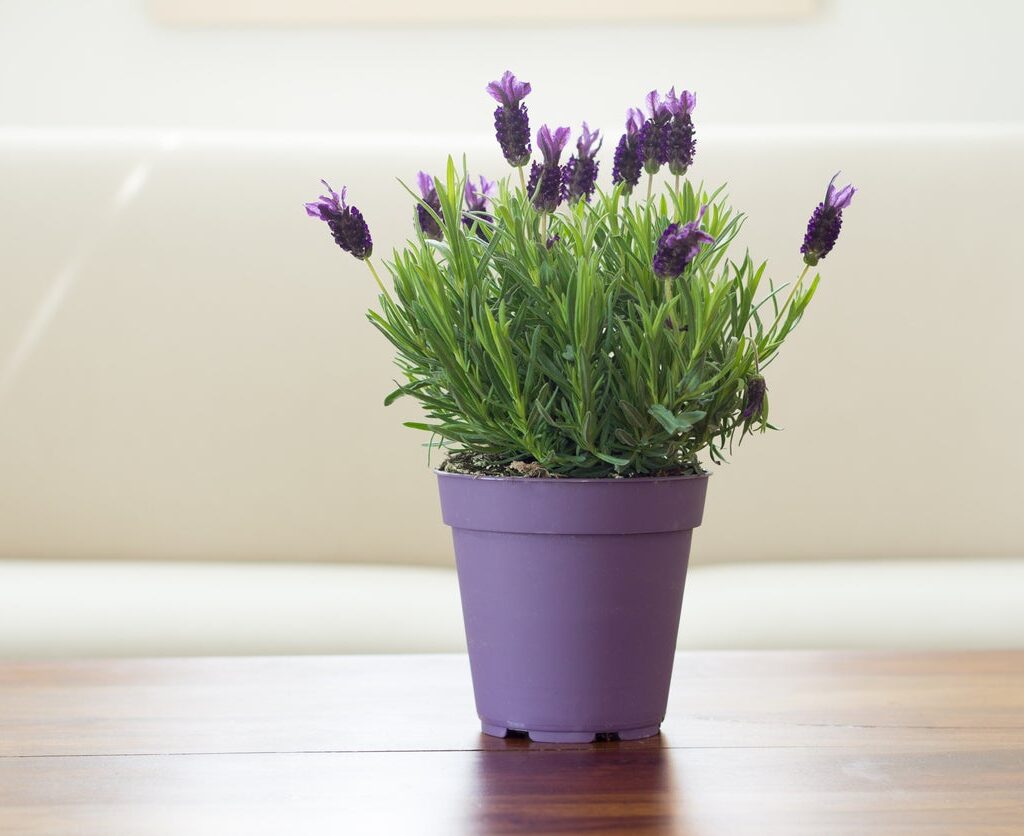
Best Lavender Varieties for Indoors
Not all lavender types adapt well to indoor growing. Here are some of the best options for container cultivation inside your home:
- French Lavender (Lavandula dentata): Compact and ideal for pots, with fringed leaves and strong fragrance.
- English Lavender (Lavandula angustifolia ‘Munstead’): One of the hardiest, known for its soft scent and delicate flowers.
- Spanish Lavender (Lavandula stoechas): Recognizable by its rabbit-ear blooms and tolerates indoor conditions well.
- Lavandin (Lavandula x intermedia): A hybrid variety that’s more heat-tolerant and can adapt to indoor settings.
Choose compact, dwarf, or container-friendly types for the best indoor results.
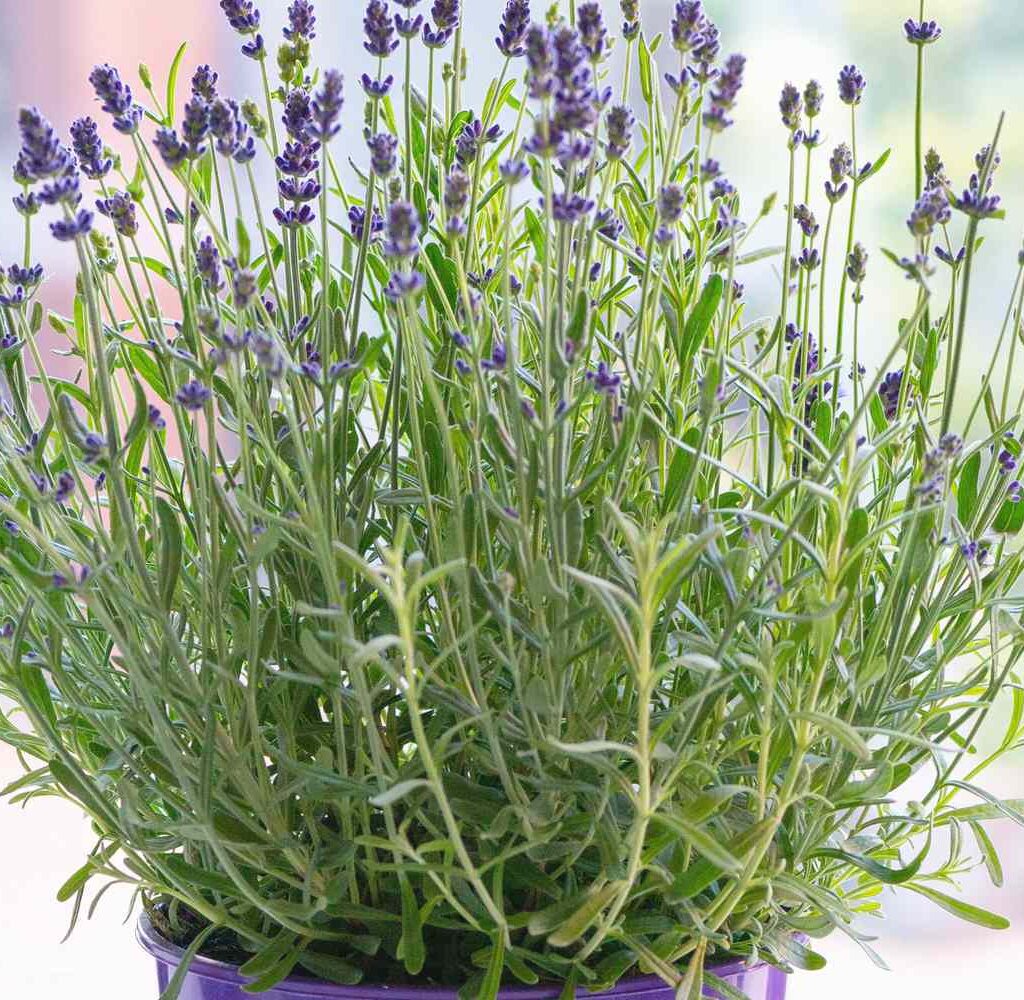
Ideal Growing Conditions for Indoor Lavender
Creating the right environment is the secret to keeping your indoor lavender healthy and vibrant. Let’s break down what it needs:
1. Light Requirements
Lavender loves the sun. Indoors, it should receive at least 6–8 hours of bright, direct sunlight daily.
- Best placement: A south-facing window is ideal. East or west-facing spots work too, provided there’s ample light.
- Supplemental lighting: In darker homes or during winter months, use a full-spectrum grow light to mimic natural sunlight.
Without sufficient light, lavender can become leggy, weak, and struggle to flower.
2. Temperature and Humidity
Lavender is naturally suited to warm, dry climates.
- Ideal temperature: 60°F–75°F (15°C–24°C).
- Avoid placing lavender near cold drafts, air conditioners, or heating vents.
- Keep humidity low. Lavender prefers dry air — avoid bathrooms or overly humid rooms.
If your home is naturally humid, improve airflow around the plant and consider using a dehumidifier.
3. Soil Type
Proper soil is crucial for healthy roots.
- Use a well-draining, sandy potting mix.
- A cactus or succulent mix works well, or you can make your own blend:
- 2 parts potting soil
- 1 part perlite or coarse sand
- 1 part small gravel or pumice
Avoid rich, moisture-retentive soils, which can cause root rot.
4. Choosing the Right Pot
Select a pot with good drainage holes to prevent water buildup. Lavender doesn’t like soggy roots.
- Material matters: Terracotta or clay pots are ideal as they allow moisture to evaporate.
- Ensure the pot is just slightly larger than the plant’s root ball to prevent overwatering.
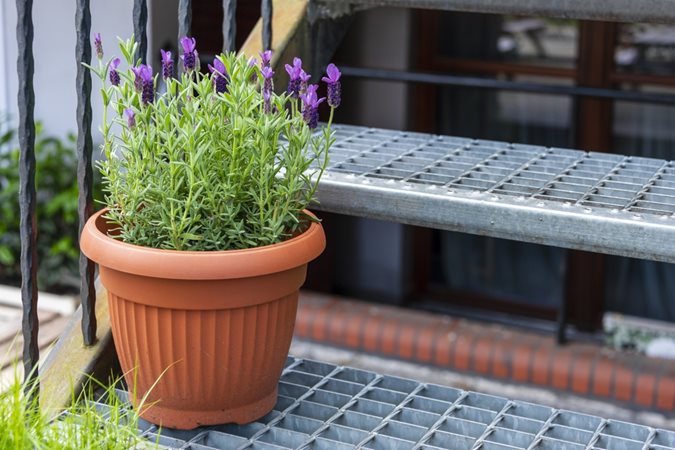
How to Water Lavender Indoors
Overwatering is the number one cause of indoor lavender problems. The key is to let the soil dry out between waterings.
Watering Schedule
- Water deeply when the top 1–2 inches of soil feel dry.
- During spring and summer (active growing season): every 7–14 days.
- In fall and winter (dormant period): every 3–4 weeks, or as needed.
Watering Technique
- Water at the base of the plant to keep foliage dry and prevent mildew.
- Empty excess water from the saucer after 10 minutes to avoid root rot.
Fertilizing Indoor Lavender
Lavender isn’t a heavy feeder but benefits from occasional nutrients.
Best Fertilizer
- Use a balanced, water-soluble fertilizer or a low-nitrogen organic fertilizer diluted to half strength.
- Fertilize every 4–6 weeks during spring and summer.
- Avoid fertilizing in fall and winter.
Too much fertilizer can reduce fragrance and flower production.
Pruning and Deadheading
Pruning promotes a bushier, healthier plant and encourages new blooms.
How to Prune Lavender
- Lightly trim back the plant in early spring to shape it.
- Remove dead, woody, or straggly growth.
Deadheading
- Snip spent flowers just above the foliage to encourage more blooms and maintain tidiness.
Never cut into the woody base, as it may not regrow from old wood.
Repotting Indoor Lavender
As lavender grows, it may outgrow its pot or deplete soil nutrients.
When to Repot
- Every 1–2 years or when roots emerge from drainage holes.
- Early spring is the best time.
Repotting Steps
- Gently remove the plant from its container.
- Shake off old soil and inspect roots.
- Prune away any damaged roots.
- Replant in fresh, dry potting mix.
- Wait a week before watering to let roots settle.
Common Problems and Solutions
| Problem | Cause | Solution |
|---|---|---|
| Yellowing leaves | Overwatering or poor drainage | Let soil dry, improve drainage, check watering habits |
| Leggy growth | Insufficient light | Move to a sunnier spot or use a grow light |
| Wilting, soft foliage | Root rot due to overwatering | Remove damaged roots, repot in dry soil |
| Powdery mildew | High humidity or poor airflow | Improve air circulation, avoid overhead watering |
Harvesting Lavender Indoors
One of the pleasures of growing lavender is harvesting its aromatic flowers.
When to Harvest
- When about half the buds on a stem are open for maximum fragrance and oil content.
How to Harvest
- Cut flower stems in the morning after dew has evaporated.
- Hang bunches upside down in a cool, dry, dark place for drying.
Use dried lavender for sachets, teas, potpourri, or homemade beauty products.
Benefits of Indoor Lavender
Besides its stunning appearance, lavender offers impressive perks:
- Natural air freshener with a calming scent.
- Promotes better sleep when placed near your bed.
- Reduces stress and anxiety through aromatherapy.
- Repels indoor pests like moths and flies.
- Can be used in culinary dishes, teas, and herbal remedies.
Final Thoughts
Caring for a lavender plant indoors is a rewarding experience that fills your home with beauty, fragrance, and tranquility. By providing plenty of sunlight, well-draining soil, and careful watering, you can enjoy this Mediterranean herb year-round. With occasional pruning and a little love, your indoor lavender will flourish, bringing a touch of the countryside to your modern home.

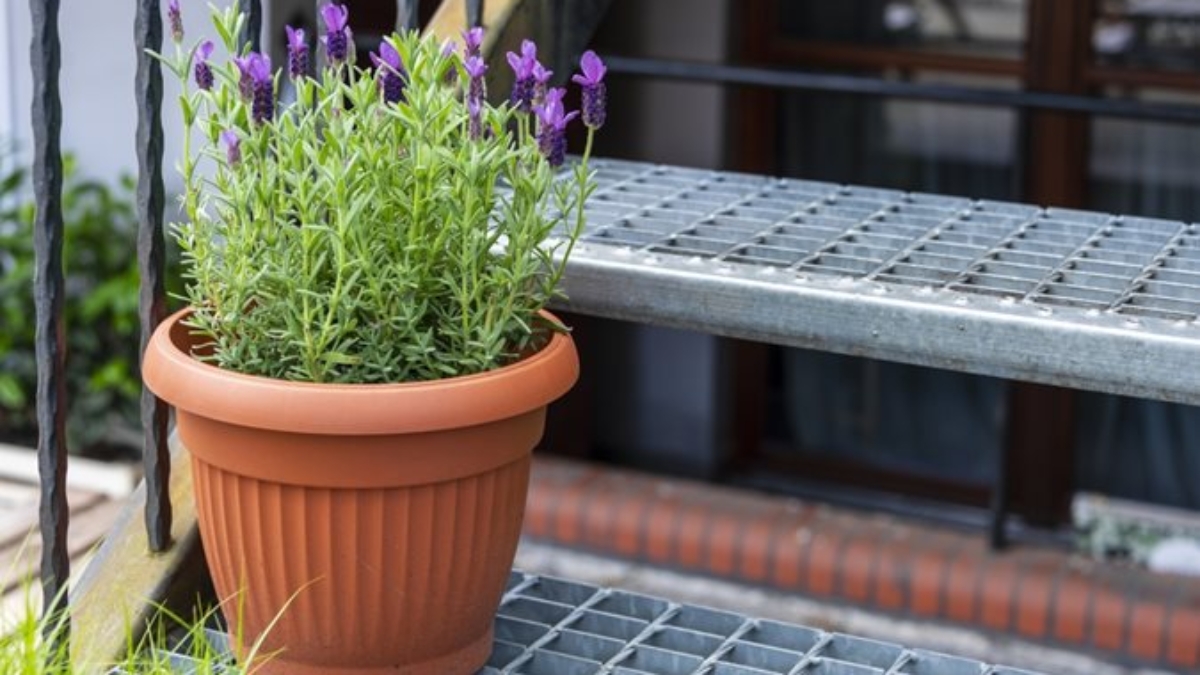

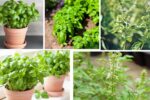

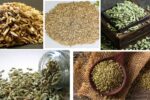
Leave A Comment